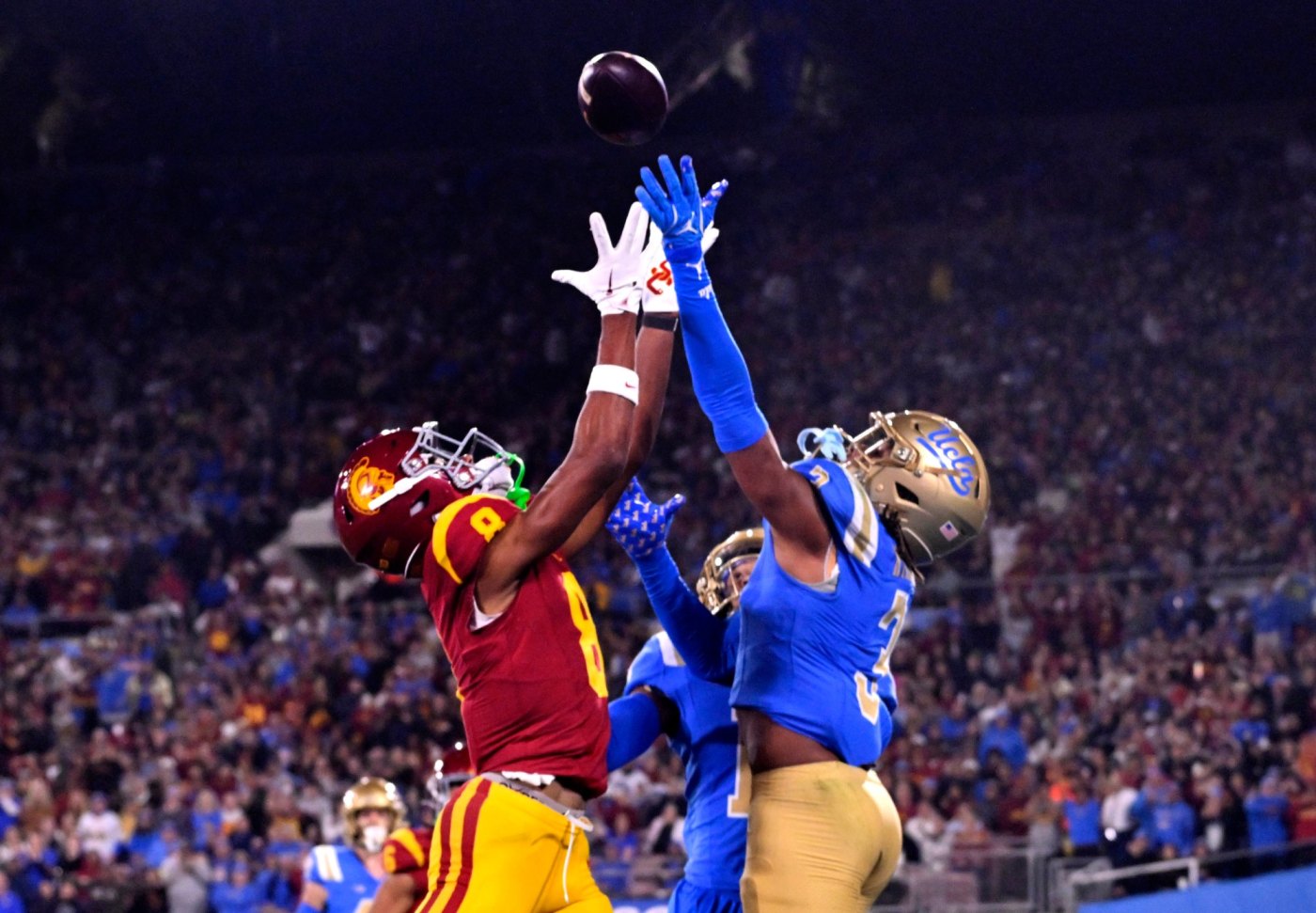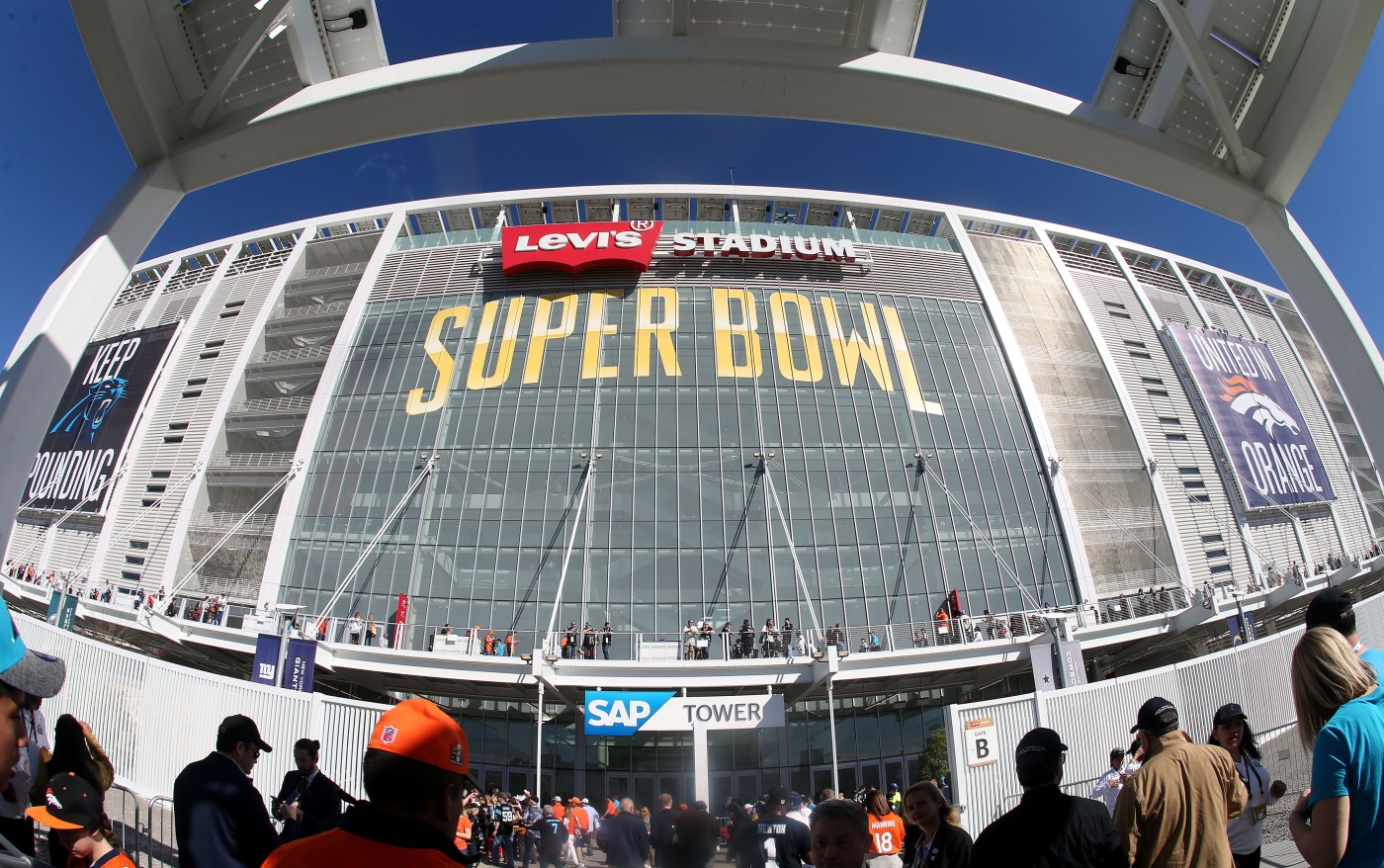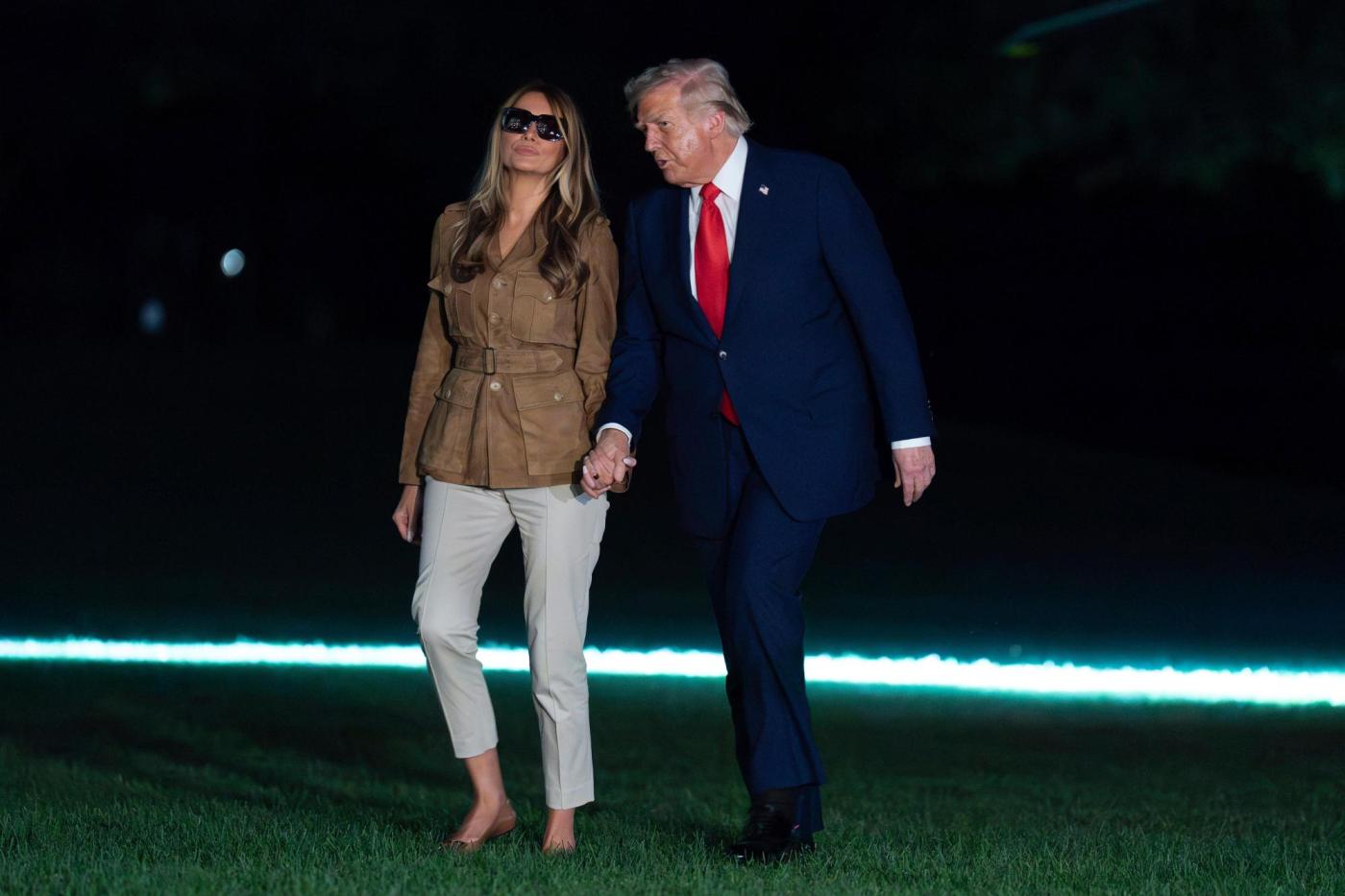The Hotline mailbag publishes weekly. Send questions to [email protected] and include ‘mailbag’ in the subject line. Or hit me on the social media platform X: @WilnerHotline
Some questions have been edited for clarity and brevity.
Is UCLA going to be in the Big Ten after the next TV contract is up? I get the size of the Southern California market (although isn’t that a tilt towards USC?), and the Bruins have a storied basketball program. But football is a hot mess. — @Cargoman0363
This subject has resurfaced with the dumpster fire in Westwood, and it generates interest along the West Coast because of the regional impact of UCLA reversing course in the early 2030s.
We could publish a series of 5,000-word articles on the Bruins that connect the recent past to the near future but will attempt to summarize the situation here.
First, let’s make one essential assumption: The Big Ten exists in the early 2030s.
There’s a non-zero chance of the so-called super league forming in that timeframe, what with all the expiring media rights contracts (Big Ten, Big 12, SEC, NCAA Tournament and College Football Playoff) creating a rupture point in the first half of the decade.
And if that super league were to form, the Big Ten and SEC would not expel schools — that’s far too difficult legally and politically. Instead, the top brands in both conferences would leave for something new, along with Notre Dame and a handful of ACC schools (and perhaps a few in the Big 12).
But if the Big Ten signs a new media rights deal that begins in the summer of 2031 and heads into the next era with its structure intact, is there any chance the Bruins would not be part of the conference?
Of course there’s a chance. It’s realignment. There’s always a chance.
That said, UCLA would not get booted out of the Big Ten, even if the football program staggers through the next five seasons.
There’s no chance the Big Ten presidents would cast out the most prestigious public university in the conference. Think about all the schools in the Power Four that have fared poorly for years and possess a fraction of UCLA’s academic pedigree — and none of them have been booted.
The Big Ten presidents aren’t going to jettison UCLA and keep Rutgers and Maryland, which have not posted a winning record in conference play since joining the Big Ten more than a decade ago.
The only way UCLA exits the Big Ten at the turn of the decade is if UCLA wants to exit the Big Ten — if the Bruins decide Big Ten membership is too costly financially and competitively.
And if they have an acceptable landing spot.
We don’t mean to offend, but returning to the rebuilt Pac-12 — as it will be constituted starting in 2026 — would not be viewed as a better option by UCLA’s key stakeholders.
(At least not for football. It’s entirely possible that Olympic sports across all conferences reorganize along regional lines. That’s a slightly different discussion than the future conference affiliation of UCLA football.)
As we see it, the only possible option for UCLA football would take the form of a 3.0 version of the Pac-12, with Cal and Stanford returning because the ACC has imploded. Perhaps Utah and the Arizona schools reverse, as well, because the ACC’s implosion triggers a restructuring of the Big 12.
But short of a super league forming or a complete overhaul of the power conference structure to create an acceptable landing spot for the Bruins on the West Coast, we don’t see UCLA exiting the Big Ten.
It’s the 2 percent scenario.
That doesn’t mean the Big Ten is the best fit for the Bruins.
The Pac-12 was far better suited for UCLA’s storied Olympic sports — of that, there has never been a shred of doubt. But the move was driven by football: Big Ten schools wanted more revenue and football drives media dollars and expanding to Southern California, primarily for USC’s brand, was the path to more cash.
UCLA was always the most interesting of the realignment cases because of its status as a basketball power with a tight budget entering a football conference with rich schools and because, above all else, the letters of its DNA spell W-E-S-T C-O-A-S-T — to a greater extent, even, than the DNAs of USC, Oregon and Washington.
And despite what UCLA’s administration (and many fans) would have you believe, the move is not a financial windfall, especially not in the first half of the Big Ten’s media rights cycle, when the annual distributions are on the low end of the escalator clause — and when it’s absolutely critical that UCLA football gain competitive traction.
But the Bruins aren’t leaving in the 2030s, not unless something goes haywire.
Granted, the football program is a mess. And it’s a mess mostly because former chancellor Gene Block spent 17 years not caring a lick about on-field success. If the chancellor (or president) doesn’t care for that span of time, rot forms.
Yes, athletic director Martin Jarmond swung and missed (epically) with DeShaun Foster. But the problems in Westwood are much greater than one bad hire, and if the Bruins don’t address their structural issues and find internal alignment, it doesn’t matter who takes the job. They will continue the cycle of mediocrity that has defined the program for years.
And it will all unfold — every flicker of hope, every depressing loss, every mind-numbing decision — in the Big Ten.
Loved your column on future scheduling issues for Washington State and Oregon State. Do you think they should resort to 2-for-1 contracts, with two road games and one home game, to lure Power Four teams to Pullman and Corvallis? — @morganducks
Yes, the Pac-12 holdovers are facing an immense challenge on the scheduling front, which was the heart of the case we made Thursday in commending the Beavers for extending the Civil War series (despite a faction of fans who want nothing to do with Oregon).
The number of power conference teams willing and able to play road games in Pullman and Corvallis is dwindling rapidly. It’s not only a matter of motivation — of being interested in non-conference road games that require long travel and carry substantial risk of defeat. It’s also a matter of having the window available.
The SEC is moving to nine conference games but keeping in place the requirement that each team play a total of 10 games against Power Four opposition, meaning one of the three non-conference slots must be filled by a team from the ACC, Big 12 or Big Ten.
And after our column published Thursday morning, ESPN reported the ACC is considering a change that, like the SEC’s policy, would require 10 games against Power Four teams.
The Big Ten and Big 12 already play nine league games. Some schools in those leagues — not enough for our liking, but some — are committed to filling one non-conference spot with a Power Four foe.
The likelihood of WSU and OSU finding teams to make the trek to the Pacific Northwest is limited.
We like your thinking with regard to the 2-for-1 model but are skeptical it will matter much. Every home game is a money maker, and most teams in the ACC, SEC, Big 12 and Big Ten will attempt to play every non-conference game at home, aside from those against Power Four opponents.
The Cougars and Beavers should do everything possible to continue their rivalry games. The matchups are good for college football in the Pacific Northwest and good for the participating schools. And they could very well be the only Power Four options for the Pac-12 holdovers.
I understand the networks have broad latitude, but can’t they use some common sense guidelines on kickoff times? How about this: For West Coast teams traveling east, the earliest start time is 12:30 p.m. Pacific, and for eastern teams traveling to the West Coast, the latest start time is 6 p.m. Pacific? — Michael J
Excellent timing for this question because the Saturday schedule features two unusual kickoff times: Texas Tech-Utah starts at 9 a.m. (Pacific) in Salt Lake City; and USC-Michigan State kicks at 8 p.m. in Los Angeles.
That’s an 11-hour difference for home teams that are one time zone apart (and used to be in the same conference).
The explanation is fairly simple: Fox, CBS and NBC are paying the Big Ten approximately $1 billion annually for the right to slot the games where they see fit.
With respect to Fox specifically, since it owns the Big Ten’s media rights and co-owns the Big 12’s rights (with ESPN): The network created the Big Noon window for its best game and wasn’t about to pay all that money for limited options.
The West Coast schools accepted the Big Ten invitations knowing they could be kicking off in the eastern half of the country at 9 a.m. Pacific. And the 14 continuing members of the Big Ten approved the West Coast teams knowing they might have to play at night in the Pacific Time Zone. (Michigan and Ohio State have exemptions.)
The networks aren’t trying to make life difficult for the fans and athletes. They are making smart business decisions — decisions available to them in exchange for gobs of cash.
What have you heard about the NCAA possibly being replaced by a national commission? — @NateJones2009
The proposal to eliminate the NCAA is related to the SCORE Act, which is currently before Congress and aimed at overhauling the industry.
Many campus and conference officials view the SCORE Act as a path out of the current mess because it would prevent athletes from being deemed employees, provide the NCAA with limited antitrust protection, and create controls over NIL.
But Texas Tech’s billionaire donor, Cody Campbell, who opposes the consolidation of power by the SEC and Big Ten, sees trouble lurking in the SCORE Act and has proposed a national commission to replace the NCAA.
The commission would have federal backing, ensure the future of Olympic sports and allow the conference to negotiate media rights deals as one entity — just as the NFL negotiates for both the AFC and NFC.
Beyond the challenge of attaining bipartisan support on Capitol Hill, the commission would face immense pushback from the SEC and Big Ten, which have no reason to pool their media rights with the ACC and Big 12.
Why give up their advantage? Yes, the Power Four could generate more in media rights if they pooled the inventory and negotiated as one entity, but the SEC and Big Ten view their competitive advantage under the current structure as more important than the raw dollars available with a pooling of rights.
The NCAA’s future is murky. But at this point, we don’t see an extinction event unfolding anytime soon.
Looking back at it now, even though they got the Pac-12 to pay dearly for scheduling games in 2024, do you think the Mountain West regrets its decision now? — @MistUncle
We can’t confirm the sentiment among Mountain West administrators, but they certainly should regret their heavy-handed approach to the scheduling partnership with Washington State and Oregon State.
Mountain West commissioner Gloria Nevarez, presumably with the approval of her campuses, played hardball with a weaker hand. Why was it weaker? Because Washington State and Oregon State had the Pac-12 brand — it’s far more valuable than the Mountain West brand, even in a depleted state — to lure the top football schools across the aisle.
Any chance of a full merger ended when the Mountain West squeezed WSU and OSU for roughly $2 million per game in the 2024 season. When the Pac-12 sought to cut that amount for 2025, the Mountain West responded by upping its offer.
Multiple sources told the Hotline during this stretch of time that frustrated officials in Pullman and Corvallis decided they wanted no part of a merger — to the extent that it was seriously considered — and instead invited the Mountain West quintet.
Boise State, Colorado State, Fresno State, San Diego State and Utah State gladly accepted the opportunity to leave the lower-tier schools behind for an enhanced competitive platform and greater media rights valuation.
College athletics are not after-school sports; they are big business. Big Ten commissioner Tony Petitti has managed big businesses before. Why is he painted as the bad guy and the SEC’s Greg Sankey as the hero? — Jon J
Appreciate the question, for we have pondered this issue for many months. Petitti has, in fact, lost the narrative on several occasions, with the future College Football Playoff format receiving the most attention by an order-of-magnitude.
One reason Petitti has ceded the narrative: He prefers to work in the shadows, which is commendable in many regards but makes Big Ten’s messaging more difficult.
The CFP is essentially a public trust. You cannot propose something as radical as a 16-team model with 13 automatic bids without bringing the fans along.
The Big Ten whiffed badly in that regard and allowed the ACC, Big 12 and SEC to gain the upper hand. They offer a less-radical alternative and made their case to the fans and stakeholders.
(Sankey and the Big 12’s Brett Yormark, in particular, are messaging experts.)
Petitti must be extremely careful moving forward. For all the influence possessed by the Big Ten, and for all the changes unfolding across the industry, he cannot be seen as authoritarian.
Transparency, combined with collaboration and incremental change, is the best path forward.
With Grand Canyon joining the Mountain West a year early, what will come of Arizona’s basketball game against San Diego State in Phoenix on Dec. 20th? The MW’s media rights contract requires that its TV partners have rights to broadcast non-conference games played by a conference member anywhere in the conference’s footprint. — Yoni C
We are not well versed in that aspect of the Mountain West’s media deal, but the matchup is set for the date you mentioned and will, in fact, take place in Phoenix.
Related Articles
CFB recruiting: UCLA fires DeShaun Foster, whacked by de-commitments
College football picks: Texas Tech, Nebraska, Washington, ASU cover spread
The Apple Cup’s uncertain future: Shifting landscape offers no guarantees beyond 2028
Holy Score: Utah-Texas Tech: Devon Dampier, passing game key for Utes
Bowl projections: Oregon to CFP, USC to Alamo, Utah drops to Las Vegas
Whether it’s televised by Fox or CBS, the Mountain West’s media partners, or by ESPN, doesn’t much matter and will be revealed at a later date.
Only one of the Wildcats’ non-conference games, the Nov. 3 showdown with defending champion Florida, has a confirmed TV partner, according to Arizona’s official schedule. (TNT will air that game from Las Vegas.)
But keep one matter in mind with regard to the Arizona-San Diego State duel: Dec. 20 is arguably the busiest multi-sport Saturday of the entire sports calendar:
— Two NFL games (Packers-Bears and Eagles-Commanders)
— Three College Football Playoff opening-round games
— Four huge college basketball games: Auburn-Purdue, Arkansas-Houston, Duke-Texas Tech and Kentucky-St. John’s
— a full load of NBA games, including Suns-Warriors (at 5:30 p.m., in San Francisco)
Unless the Wildcats and Aztecs play at night, they will have serious competition for eyeballs.
Which college football stadiums do you feel have the best lighting for night games? My complaint about the 8 p.m. kickoff for USC-Michigan State isn’t the start time. I don’t think the Coliseum is particularly well lit for night games. — @draywilson29
If you’re referring to the visuals for fans in the stadium, I can’t offer great context because the well-lit press box creates slightly different experience. And I have binoculars. And I have access to TVs for replay.
But from the standpoint of fans watching from home, I can relate. I spend many Saturdays at home watching games on four screens for 14 hours. And yes, the visuals can vary by the stadium. Older and bigger (i.e., bowl-shaped stadiums) are often worse at night than newer and smaller.
Also, the uniform colors matter, especially the degree of contrast between the color of the jersey and the color of the numbers. USC’s cardinal and gold don’t make for a great contrast. In that respect, the road whites are much better.
*** Send suggestions, comments and tips (confidentiality guaranteed) to [email protected] or call 408-920-5716
*** Follow me on the social media platform X: @WilnerHotline





